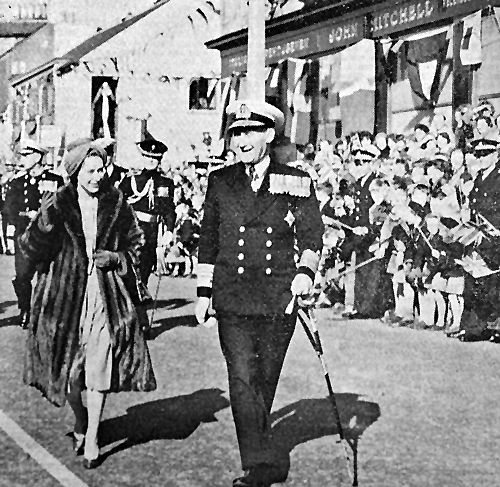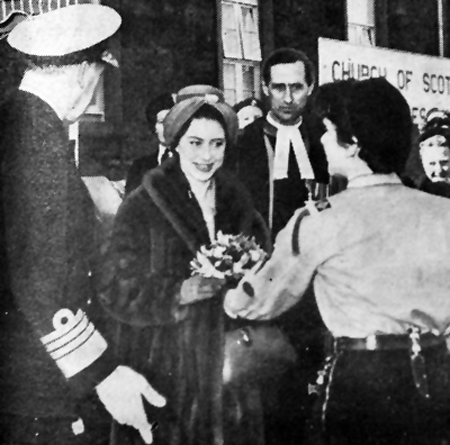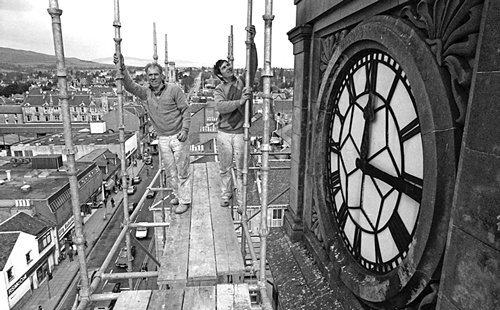HELENSBURGH’S seafront Clock Tower was put up for sale last year by owners VisitScotland, who used it as a tourist information office, and it was bought recently by a local firm.
It will be the start of the fourth chapter in the life of what began as the Old Parish Church.
The church and its square, somewhat Italianate, tower with round arched louvre windows to the belfry was designed by Charles Wilson (1810-63) in 1846, and built on land gifted by the then Sir James Colquhoun on a site reckoned to be the finest in town.
The burgh’s first church was in Colquhoun Square, but with its congregation’s defection to the Free Church, there was no longer a parish church in Helensburgh.
The minister at Rhu helped out by taking weeknight services, but the need for a Parish Church in the fast-growing town became urgent.
The seafront site was offered by the Laird of Luss, and on Sunday May 23 1847 the church, to be known later as the Old Parish Church, was opened for services.
The first minister was the Rev John Lindsay, who was ordained by the Presbytery of Dumbarton in March 1848.
In 1862 it was elevated to a Parish Church to be known as the Church and Parish of Helensburgh.
It opened a successful day school which, however, was closed as a result of the passing of the Education Act in 1872, to be replaced by the newly built Hermitage School.
The name was changed to Helensburgh Old Parish Church in 1929, following the national union of the United Free Church and the Church of Scotland.
By the middle of the 20th century attendance at church was dwindling and it became clear that the town could no longer support five churches of the same denomination.
When the Old Parish Church became vacant following the retirement of the Rev T.R.Allison in September 1956 a union took place with St Andrew’s Church in the square to form Old and St Andrew’s.
On February 5 1957 the Rev John Henry Dutch was inducted to the united charge, and both churches continued to be used for worship.
The final services in the Old Parish Church were held on Sunday September 27 1958.
On October 22 that year, by a majority of votes, the united congregation came to the decision to use only St Andrew’s Church for public worship, and this was approved by Dumbarton Presbytery in December.
The decision had already been reached to sell the buildings to the Church of Scotland Huts and Canteens Committee for £5,000, and a year later the plans for converting the premises were approved by the Dean of Guild Court at an expected cost of £11,000.
It was converted by James Williamson Ltd. into a hostel for navy personnel, and chapter two began.
 It was opened by the newly engaged HRH Princess Margaret on March 29 1959, the town’s first royal visit for 30 years.
It was opened by the newly engaged HRH Princess Margaret on March 29 1959, the town’s first royal visit for 30 years.
She arrived at Helensburgh Central Station in the royal train to be greeted by the Lord Lieutenant of the County, Admiral Sir Angus Cunninghame Graham.
Outside in streets bedecked with flags and bunting a crowd of nearly 2,000, including many children, waited to cheer the royal guest.
A musical salute was given by the band of the Royal Marines, and the Guard of Honour was provided by the 3rd Submarine Squadron from Faslane.
They were inspected by the Princess, who was wearing a full-length fur coat, before the official party left to walk down a packed Sinclair Street to the Services Club.
She was met by the Very Rev John Fraser MBE, DD, TD, who was representing the Moderator of the Church of Scotland.
The Captain of the Third Submarine Squadron, Captain John H.Adams, MVO, RN, a former commander of the royal yacht Britannia, said: “Your Royal Highness, Ladies and gentlemen, may I on behalf of the Royal Navy stationed on the west coast of Scotland, and other services, thank the Church of Scotland Committee on Hut and Canteen Work for the provision of this wonderful club in Helensburgh.
“And ma’am, may I on behalf of the Church of Scotland and all of us here say how very much we appreciate your coming to visit us in Dunbartonshire at such a happy and busy time.
“May I ask Your Royal Highness to signify the Church of Scotland Services Club in Helensburgh open by unveiling a plaque behind these flags.”
 Princess Margaret expressed her pleasure at being present and unveiled the plaque, a saltire on an elliptical shield, then declared the club to be duly opened.
Princess Margaret expressed her pleasure at being present and unveiled the plaque, a saltire on an elliptical shield, then declared the club to be duly opened.
Proposing the vote of thanks, the Rev R.Leonard Small, OBE, DD, expressed particular gratitude to the King George’s Fund for Sailors and the Admiralty Central Welfare Fund for generous grants towards the capital cost, and many friends in Helensburgh and District for gifts in kind.
He concluded by wishing Princess Margaret “a fairy-tale happy ending”, then some 130 invited guests saw the Princess tour the canteen and hostel.
Provost Miss Janet R.Young said: “I think this Club is going to be a Godsend to the men of the forces, especially the navy men — there are so many of them and there is so little provision for them otherwise.
“The Church of Scotland is supplying something which has really been necessary since the Squadron came to Faslane, and I am glad that the need is now being met in this wonderful way.
“Personally I am delighted it has been found possible to make such splendid use of the Old Parish Church. It couldn’t have been put to a better use now that its days as a Church are finished.”
The Princess paid a brief visit to the Squadron at Faslane before returning by car to Glasgow for other engagements.
The former church continued to serve as a hostel until 1968, when the services club moved to the former Braeholm Hospital in the east end of the town and became the Aggie Weston Royal Sailors Rest.
The church building then lay empty and became derelict until, in 1982, it was sold to A.Trail & Son Ltd, a local builder, who requested planning permission to demolish the building and build a block of flats on the site.
 This was eventually granted on condition that the clock tower was left standing and reconditioned — repairing the four-faced clock was the bane of jeweller Gordon Hattle’s life in those years, and has been for others since.
This was eventually granted on condition that the clock tower was left standing and reconditioned — repairing the four-faced clock was the bane of jeweller Gordon Hattle’s life in those years, and has been for others since.
The nave, hall and outer buildings, once the school, were demolished in 1982, and soon after the Tower Place flats were built next.
The now Clock Tower then served partly as a gallery and partly as a source of tourist information — the third chapter in its life.
The large tolling bell with the inscription ‘Let all things be done to the Glory of God’ is still in place. J.Arnold Fleming presented a clarion of Westminster Chimes to be rung on Christmas Day 1929.
The porch designed by Helensburgh architect Robert Wemyss in 1923, was also dedicated that year to the town ‘in memory of those who in time past worshipped here’.
- The clock repair picture was taken by burgh photographer Brian Averell and is reproduced with his permission.




